
РЕЗОЛЮЦІЯ: Громадського обговорення навчальної програми статевого виховання
ЧОМУ ФОНД ОЛЕНИ ПІНЧУК І МОЗ УКРАЇНИ ПРОПАГУЮТЬ "СЕКСУАЛЬНІ УРОКИ"
ЕКЗИСТЕНЦІЙНО-ПСИХОЛОГІЧНІ ОСНОВИ ПОРУШЕННЯ СТАТЕВОЇ ІДЕНТИЧНОСТІ ПІДЛІТКІВ
Батьківський, громадянський рух в Україні закликає МОН зупинити тотальну сексуалізацію дітей і підлітків
Відкрите звернення Міністру освіти й науки України - Гриневич Лілії Михайлівні
Представництво українського жіноцтва в ООН: низький рівень культури спілкування в соціальних мережах
Гендерна антидискримінаційна експертиза може зробити нас моральними рабами
ЛІВИЙ МАРКСИЗМ У НОВИХ ПІДРУЧНИКАХ ДЛЯ ШКОЛЯРІВ
ВІДКРИТА ЗАЯВА на підтримку позиції Ганни Турчинової та права кожної людини на свободу думки, світогляду та вираження поглядів
- Гідрологія і Гідрометрія
- Господарське право
- Економіка будівництва
- Економіка природокористування
- Економічна теорія
- Земельне право
- Історія України
- Кримінально виконавче право
- Медична радіологія
- Методи аналізу
- Міжнародне приватне право
- Міжнародний маркетинг
- Основи екології
- Предмет Політологія
- Соціальне страхування
- Технічні засоби організації дорожнього руху
- Товарознавство продовольчих товарів
Тлумачний словник
Авто
Автоматизація
Архітектура
Астрономія
Аудит
Біологія
Будівництво
Бухгалтерія
Винахідництво
Виробництво
Військова справа
Генетика
Географія
Геологія
Господарство
Держава
Дім
Екологія
Економетрика
Економіка
Електроніка
Журналістика та ЗМІ
Зв'язок
Іноземні мови
Інформатика
Історія
Комп'ютери
Креслення
Кулінарія
Культура
Лексикологія
Література
Логіка
Маркетинг
Математика
Машинобудування
Медицина
Менеджмент
Метали і Зварювання
Механіка
Мистецтво
Музика
Населення
Освіта
Охорона безпеки життя
Охорона Праці
Педагогіка
Політика
Право
Програмування
Промисловість
Психологія
Радіо
Регилия
Соціологія
Спорт
Стандартизація
Технології
Торгівля
Туризм
Фізика
Фізіологія
Філософія
Фінанси
Хімія
Юриспунденкция
What is culture?
Definition.The word culture has many different meanings. For some it refers to the good literature, music, art, and food. For a biologist, it is a colony of bacteria or other microorganisms. However, for anthropologists and other behavioral scientists, culture is the full range of learned human behavior patterns. The term was first used in this way by the pioneer English Anthropologist Edward B. Tylor in his book “Primitive Culture”, published in 1871. Tylor said that culture “includes knowledge, belief, art, law, morals, custom, and any other capabilities and habits acquired by man as a member of society.”
Culture is a powerful human tool for survival, but it is a fragile phenomenon. It is constantly changing and easily lost because it exists only in our minds. Our written languages, governments, buildings, and other man-made things are merely the products of culture. They are not culture in themselves.
In order to live man, like all other species, must come to terms with the external world.... Man employs his sense organs, nerves, glands, and muscles in adjusting himself to the external world. But in addition to this he has another means of adjustment and control.... This mechanism is culture.
Layers of Culture. There are three layers or levels of culture that are part of your learned behavior patterns and perceptions. Most obviously is the body of cultural traditions that distinguish your specific society. When people speak of Italian, or Japanese culture, they are referring to the shared language, traditions, and beliefs. In most cases, those who share your culture do so because they acquired it as they were raised by parents and other family members who have it.
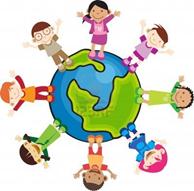 The second layer of culture that may be part of your identity is a subculture. In complex, diverse societies in which people have come from many different parts of the world, they often retain much of their original cultural traditions. As a result, they are part of an identifiable subculture in their new society. The shared cultural traits of subcultures set them apart from the rest of their society. Examples of easily identifiable subcultures in the United States include ethnic groups such as Vietnamese Americans, African Americans, and Mexican Americans. Members of each of these subcultures share a common identity, food tradition, dialect or language, and other cultural traits that come from their common background and experience.
The second layer of culture that may be part of your identity is a subculture. In complex, diverse societies in which people have come from many different parts of the world, they often retain much of their original cultural traditions. As a result, they are part of an identifiable subculture in their new society. The shared cultural traits of subcultures set them apart from the rest of their society. Examples of easily identifiable subcultures in the United States include ethnic groups such as Vietnamese Americans, African Americans, and Mexican Americans. Members of each of these subcultures share a common identity, food tradition, dialect or language, and other cultural traits that come from their common background and experience.
The third layer of culture consists of cultural universals. These are learned behavior patterns that are shared by all of humanity collectively. No matter where people live in the world, they share these universal traits. Examples of such "human cultural" traits include:
| 1. | communicating with a verbal language consisting of a limited set of sounds and grammatical rules for constructing sentences |
| 2. | using age and gender to classify people (e.g., teenager, senior citizen, woman, man) |
| 3. | classifying people based on marriage and relationships and having kinship terms to refer to them (e.g., wife, mother, uncle, cousin) |
| 4. | raising children in some sort of family setting |
| 5. | having a sexual division of labor (e.g., men's work versus women's work) |
| 6. | having a concept of privacy |
| 7. | having rules to regulate sexual behavior |
| 8. | distinguishing between good and bad behavior |
| 9. | having some sort of body ornamentation |
| 10. | making jokes and playing games |
| 11. | having art |
| 12. | having some sort of leadership roles for the implementation of community decisions |
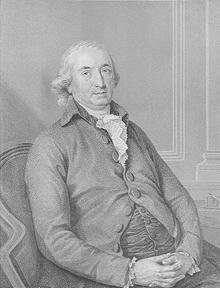 Johann Herder
called attention to national cultures
Johann Herder
called attention to national cultures
| 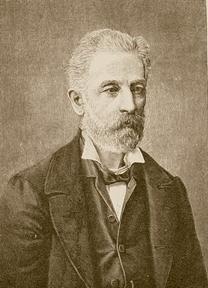 Adolf Bastian
developed a universal model of culture
Adolf Bastian
developed a universal model of culture
|
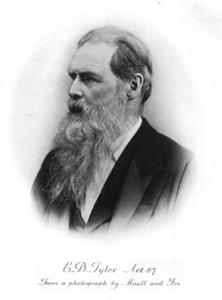 Edward Tylor
British anthropologist was one of the first English-speaking scholars to use the term culture in an inclusive and universal sense
Edward Tylor
British anthropologist was one of the first English-speaking scholars to use the term culture in an inclusive and universal sense
| 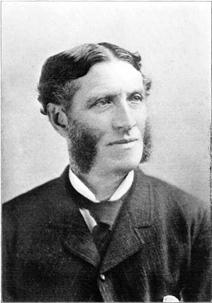 Matthew Arnold
British poet and critic viewed "culture" as the cultivation of the humanist ideal
Matthew Arnold
British poet and critic viewed "culture" as the cultivation of the humanist ideal
|
View on culture as a process (by Mc Grew)
1. A new pattern of behavior is invented, or an existing one is modified.
2. The innovator transmits this pattern to another.
3. The form of the pattern is consistent within and across performers, perhaps even in terms of recognizable stylistic features.
4. The one who acquires the pattern retains the ability to perform it long after having acquired it.
5. The pattern spreads across social units in a population. These social units may be families, clans, troops, or bands.
6. The pattern spreads across generations.
| <== попередня сторінка | | | наступна сторінка ==> |
| Unit 1. What Culture is. | | | Exercise 8. Translate the following sentences. |
|
Не знайшли потрібну інформацію? Скористайтесь пошуком google: |
© studopedia.com.ua При використанні або копіюванні матеріалів пряме посилання на сайт обов'язкове. |